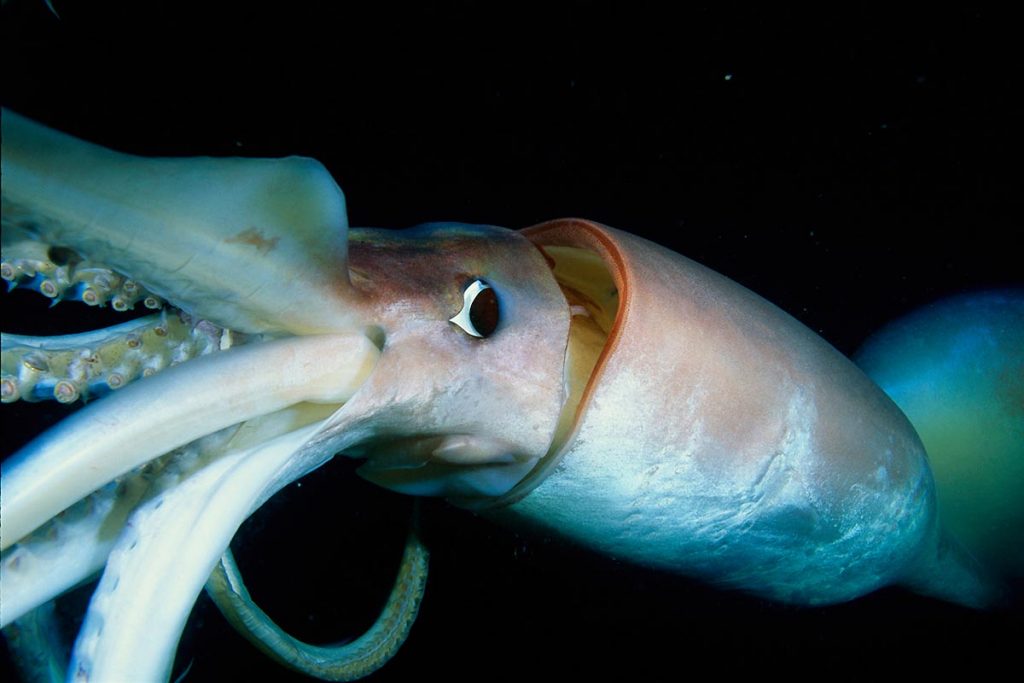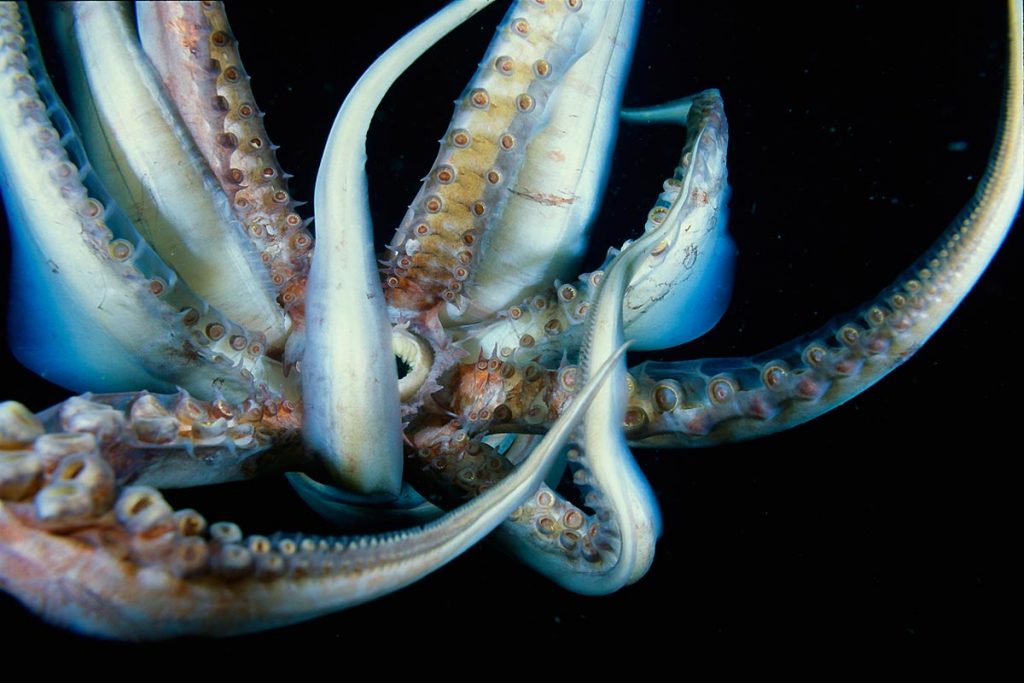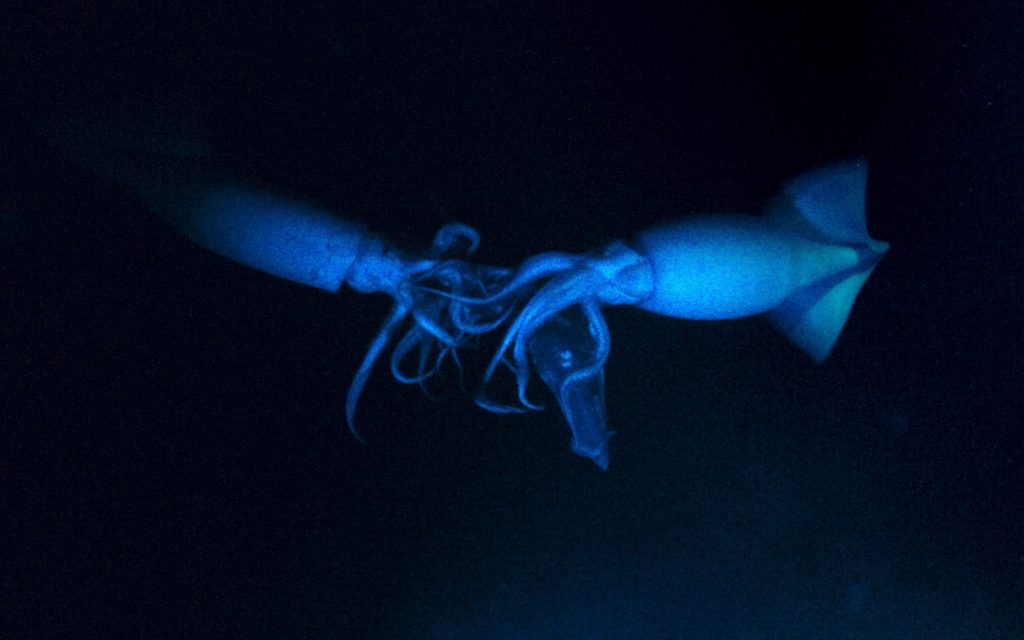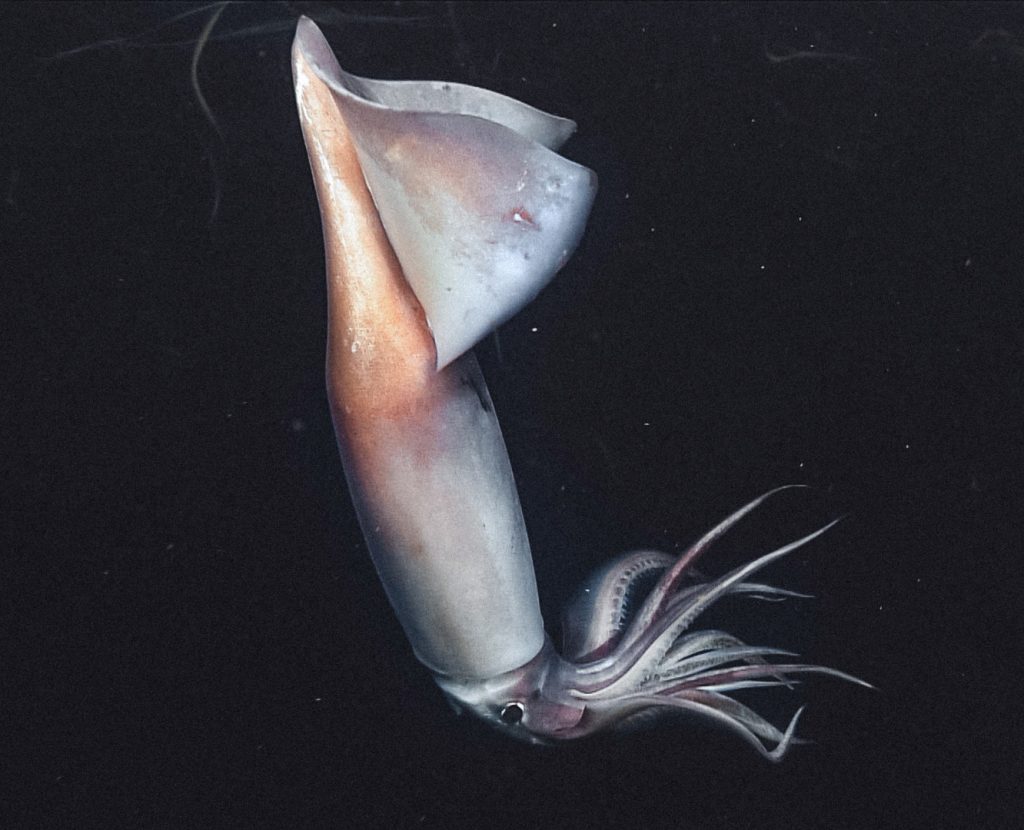Even among the many fascinating and aline-like creatures that call the deep sea their home, Humboldt squids are a peculiar kind of animal.
Growing up to six feet (1.8 meters) long, these squids are one of the most aggressive animals of their kind. Cases of cannibalism were recorded by researchers. However, a new research suggests that these squids may be excellent communicators rather than the deep sea brutes they were once thought to be.
Squids are known to communicate with each other by changing their color or patterns on their body. For Humboldt squids who live in the deepest depths of the sea, this method of communication would not work because of the total lack of light.
The new research suggests that they bypassed this issue emitting a backlight to have their bodies glow different patterns. That is the same light and technology that e-readers such as Kindle use.
For researchers like Ben Burford, this discovery shed a new light on the mysterious squids. Burford is a graduate student of Stanford University, and has participated in the new research.
Burford said that Humboldts are known to hunt small fish and other prey in small packs. For a long time, how the squids coordinated their movements in absolute darkness was a mystery for researchers. The findings of this research may be the key to explain how these invertebrates managed to hunt without bumping into each other.
Burford and his team closely studied the squids through a deep sea footage off the California coast. Monterey Bay Aquarium Research Institute operates these vehicles for academic purposes.
The team has identified at least 30 different patterns consisting of lines and dots. Although it looks as if the patterns are dark, researchers believe that it is because the camera does not capture the light that is emitted by the squid’s bioluminescent skin. This means that the animal shines light inside of their body tissue.
If this finding proves to be true, it would change the scientific perception on bioluminescence.
As of now, animals are thought to self-generate only to lure unsuspecting prey or when finding a mate. Social behavior among deep sea creatures has not been studied seriously; this research may change that.
It is said that we know more about outer space than we do about our deep seas. Share with us your thoughts in the comments, and be sure to follow us on Facebook for more articles like this one.
Replaced!







